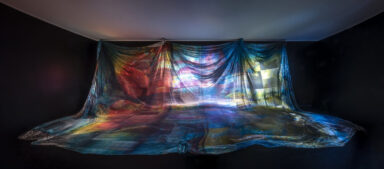Here is a glimpse of curator Eugenio Viola’s interview with artist Gian Maria Tosatti, author of the Italian Pavilion at the 59th Venice Art Biennale, which will appear on collectibleDRY issue #20
Eugenio Viola: Now that the pavilion is almost finished, how does it feel to be the first artist in the history of our national participations to represent the Bel Paese alone?
Gian Maria Tosatti: You feel a sense of great responsibility because Italy is not only my country, but also a nation with an extremely significant and important history of art, which we who do this work are continually confronted with. For this reason, regardless of what we are doing, the mere fact that this is a historic occasion fills me with a great sense of responsibility and pride, which means that I will necessarily try to live up to it.
EV: Absolutely, I’m sure it will have as much effect as all of your work, or perhaps even more. I already realise that – as you say, often, rightly, the work transcends even the intentions of its author – and becomes bigger and deeper.
GMT: And here’s another question: what does it feel like to represent Italy as a curator after so many years spent in foreign cultural institutions?
EV: A great sense of responsibility, of course, but also a great honour. I am proud of my choice and I believe we have done our utmost to represent Italy. I also believe that it is not the pavilion of Viola and Tosatti, but rather represents an entire generation and a category of people who, like us, are outsiders.
GMT: Yes, but I believe that both of us over the years have done a great job of involving the Italian art scene. We have not only looked at our individual paths, but we have really involved many fellow artists and curators in a vital network of relationships that is often first human and then professional.
EV: These are the reasons for a difference that we reaffirm with our work.
GMT: On the other hand, I always say that the history of art is a history made up of stories. We have many stories, almost sentimental ones, with our fellow generations. […]

[…] EV: Yes, absolutely. And so can we say that this work represents a unicum in your existential artistic path, beyond responsibility?
GMT: Let’s say it is a variant. I would like the conditions of grace of this work, that is, those in which a critic, a curator who is also a friend, stimulates reflection, to occur again. In fact, it has already happened with Filipp Vulak and Yulia Kleiman, with whom I have developed a relationship of friendship and continuity, who called me to do a new production in Russia, which was very fascinating and politically delicate. The inspiration came from them and so did the invitation. We should have opened in July this year, right after the Biennale. Then, unfortunately, the war made this impossible. Filipp had to take refuge abroad. But I like this practice of getting directly involved, of getting “personal”. The history of art has always gone on like this. We live in a phase of great solitude and, instead, we should break this stalemate, we should try to dialogue more and give rise to fruitful inspirations in each other. So this work is unique for now, but I hope it can become a dangerous precedent. […]
Read the full interview on the paper issue of collectible DRY #20 !



